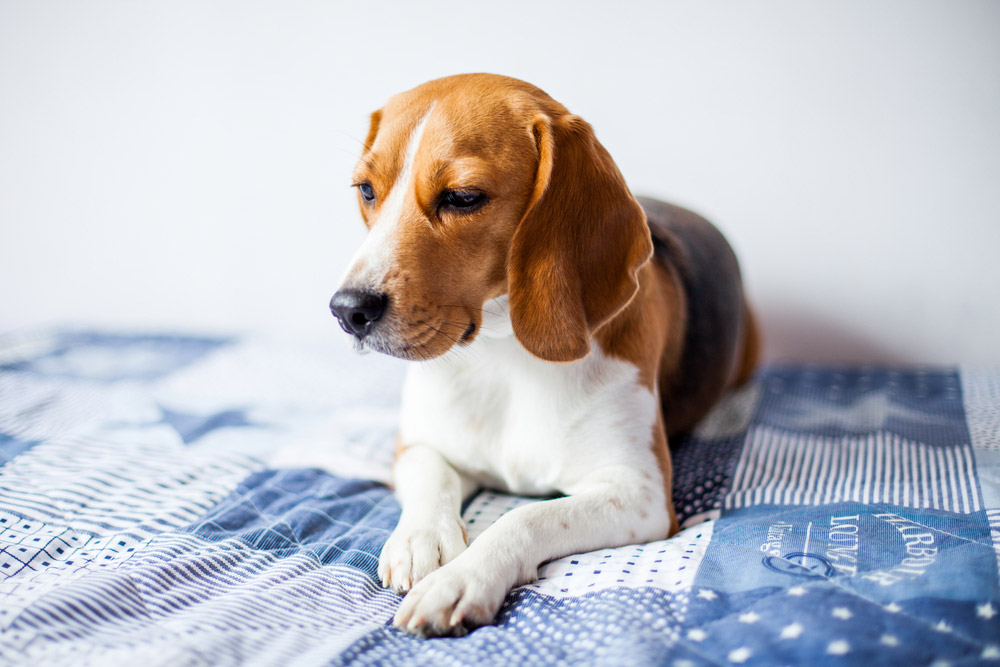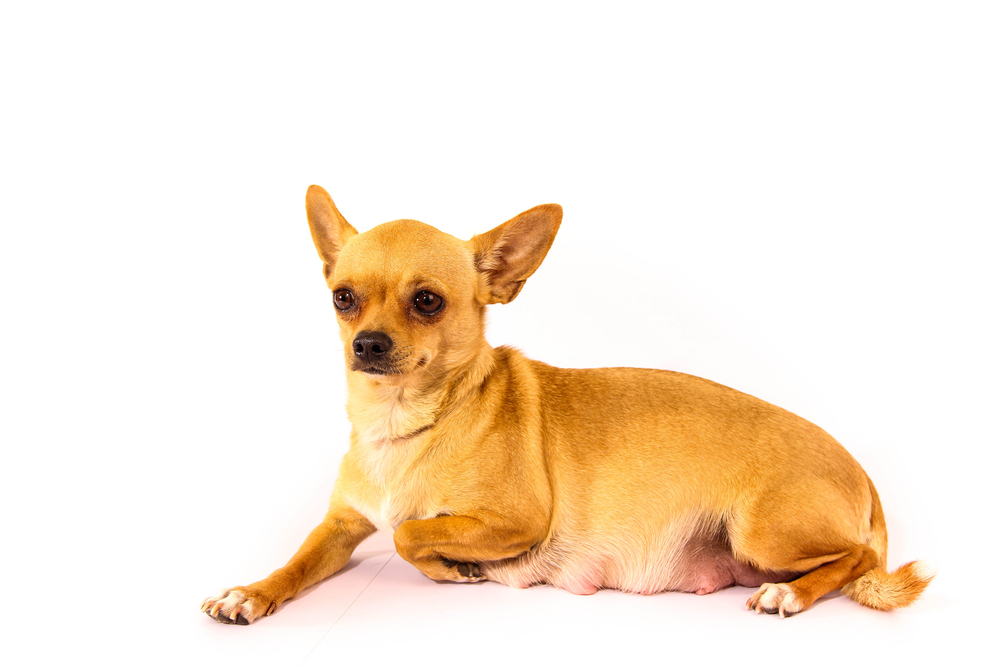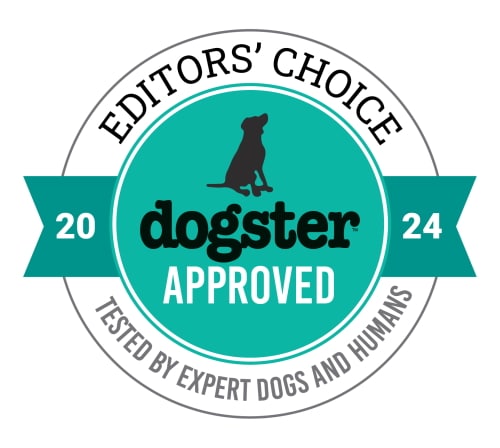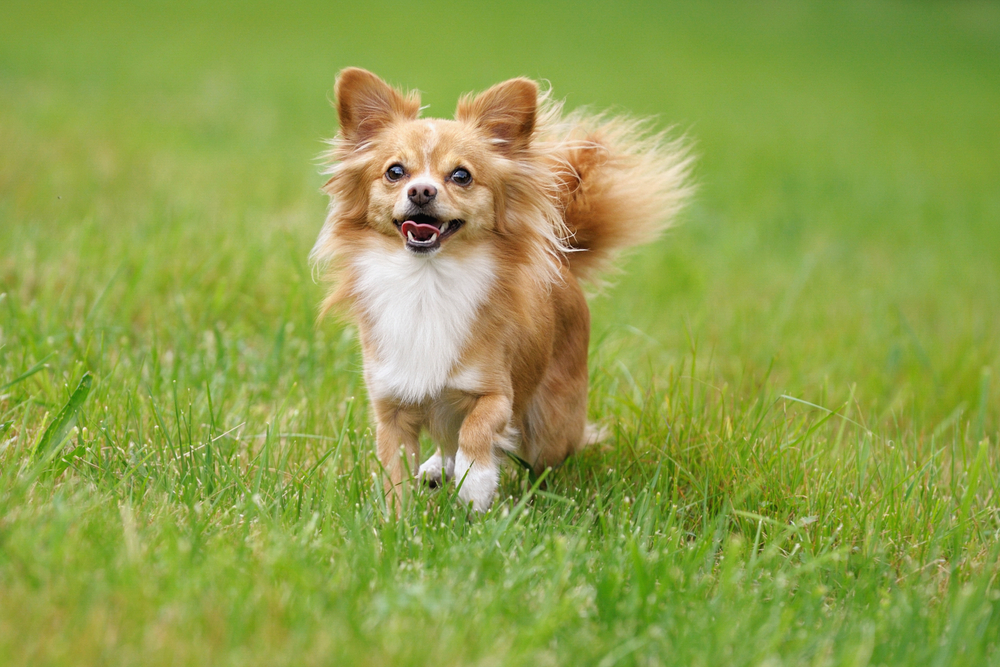Click to Skip Ahead
You can hear your poor pup’s tummy rumbling, which sounds uncomfortable. Your dog is restless and stretching. What can you do to help your dog feel a bit more comfortable? In some cases, a bit of massage will help your dog.
Causes of Gas in Dogs
Flatulence in dogs is most often caused by the food they are eating or the items that are unbeknownst to you, such as your dog’s eating. Which we refer to as dietary indiscretion. Certain foods are more likely to cause excessive gas in your dog’s gut, including:
- Milk products
- Foods with a high-fat content
- Beans
- Soybeans
- Spicy food
While poorly digestible diets can lead to excessive fermentation in the gut by gas-producing bacteria, some dogs have maldigestion disorders and produce gas and soft stools even on high-quality diets.
Dogs that gobble down their food and inhale a lot of air are also prone to gas.

Signs of Gas in Dogs
Some signs associated with flatulence in dogs include:
- Expulsion of gas that we commonly refer to as farting
- Borborygmus or rumbling sounds in the abdomen
- Mild abdominal bloating
The 4 Massaging Techniques to Relieve Gas in Dogs
To help your dog with massage, it must be very relaxed. Consider having it in a comfortable and quiet place, such as their dog bed, your bed, or even on a blanket on the floor. If it’s tense or nervous, the massage will likely be ineffective and may even cause your dog discomfort.
You should apply gentle pressure in slow motion as you perform these techniques. You’ll typically want to repeat the movements for several minutes, but there’s no clear-cut timeline you need to follow. Do not try massage if your dog is in pain, lethargic, or acting abnormally. While a slight abdominal distention can be associated with excess gas, a truly distended abdomen could mean a more severe issue, such as gastric dilatation volvulus, which needs prompt medical intervention.
1. Gentle Petting
As simple as it sounds, gently pressing your dog from head to tail can help with gas build-up. As you stroke your dog, they’ll generally relax, so it’s easier for your dog to pass gas.
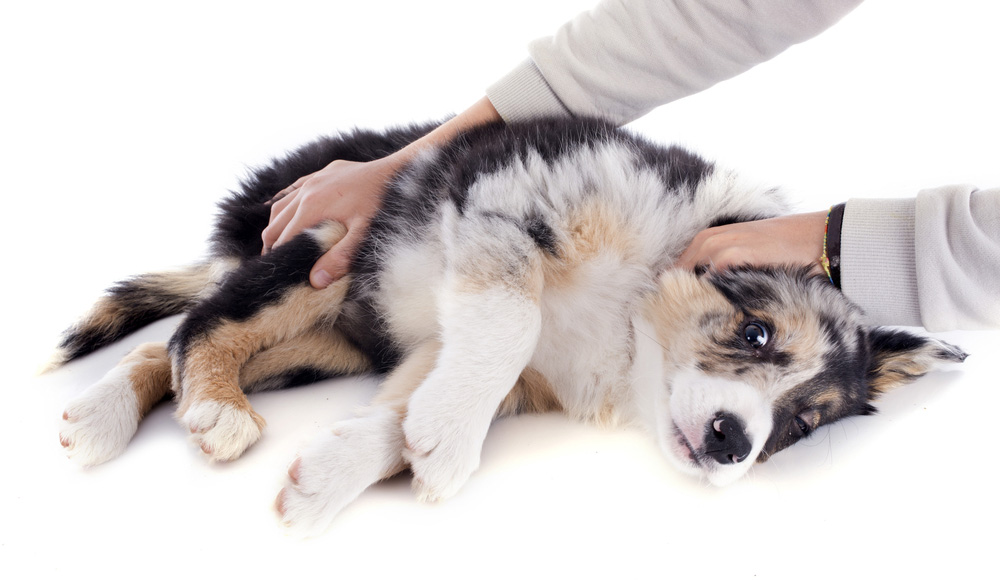
2. Circular Belly Rubs
Another common tool for helping your dog with flatulence is circular belly rubs. You’ll make a half-circle moving from just below your dog’s ribs down to the inguinal area, also called the groin. After your first stroke, you’ll make another half-circle, gently moving up from the groin to the stomach. Repeat this circular motion for several minutes.
3. Back Massage to Release Tension
Avoid massaging directly over the spine. Instead, with your dog standing or lying down, gently rub circles on each side of your dog near the back to reduce tension.
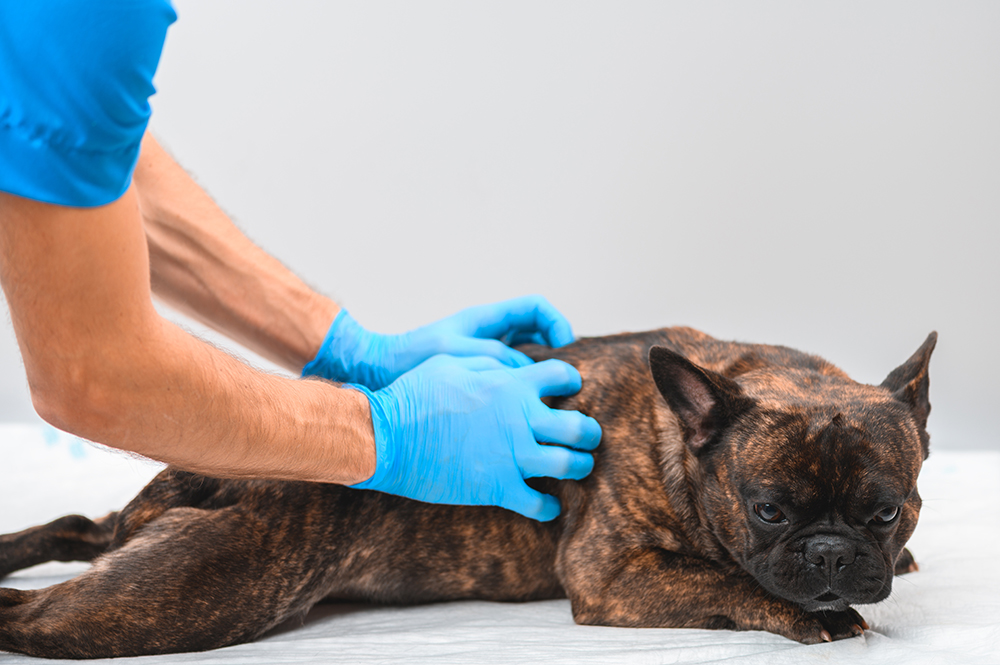
4. Side Massages
You can try to incorporate back and side massages together. Have your dog stand up and make circular movements, focusing your efforts on the abdomen. You can also tap the stomach, which sometimes helps the borborygmus.
Other Ways to Relieve Gas in Dogs
Consider your dog’s diet if your dog regularly has terrible gas. While fiber benefits pets, it can increase your dog’s flatulence. Some dogs will have gas issues if they can’t digest their food well. Hydrolyzed or novel protein diets may help, such as:
Does your dog chow down by gulping their food in seconds? Slow down their eating with a slow-feeder bowl or interactive puzzle toys.
Increasing your dog’s activity can help keep their intestinal motility working to move gas through. Go for longer walks after eating. Probiotics help regulate the gut microbiome and reduce the number of gas-producing bacteria that contribute to your dog’s flatulence.

Frequently Asked Questions (FAQ)
Should I massage my dog’s distended stomach?
It’s one thing to massage your dog’s tummy when it’s a little gassy, but it’s quite another if it’s bloated. A bloated dog can be a surgical emergency. If your dog’s abdomen is distended, don’t put pressure on its belly. Get it to a veterinarian for an examination immediately.
PangoVet. It’s an online service where you can <b>talk to a vet online</b> and get the personalized advice you need for your pet — all at an affordable price!
</p>
<div class="su-button-center"><a href=https://www.dogster.com/ask-the-vet/"https://pangovet.com/?utm_source=dogster&utm_medium=article&utm_campaign=dog_preventative_wellness%22 class="su-button su-button-style-default" style="color:#FFFFFF;background-color:#FF6600;border-color:#cc5200;border-radius:9px;-moz-border-radius:9px;-webkit-border-radius:9px" target="_blank" rel="nofollow"><span style="color:#FFFFFF;padding:0px 24px;font-size:18px;line-height:36px;border-color:#ff944d;border-radius:9px;-moz-border-radius:9px;-webkit-border-radius:9px;text-shadow:none;-moz-text-shadow:none;-webkit-text-shadow:none"> Click to Speak With a Vet</span></a></div></div></div>"}" data-sheets-userformat="{"2":513,"3":{"1":0},"12":0}" data-sheets-validation-definition="{"1":{"1":{"1":23,"2":[{"1":1,"3":{"1":{"1":[{"1":4,"6":1},{"1":1,"2":"="}]},"2":{"1":[{"1":2,"2":"="},{"1":3,"3":1}]},"3":"R1]S"},"4":[{"1":{"1":1,"2":21,"3":0,"4":1,"5":2236944,"6":"841046713"},"2":1}]}],"6":[{"1":{"2":{"1":2,"2":"🍎 Ate or drank"}},"2":{"1":2,"2":676776},"3":{"1":2,"2":12574966}},{"1":{"2":{"1":2,"2":"🐕 Behavior & training"}},"2":{"1":2,"2":676776},"3":{"1":2,"2":12574966}},{"1":{"2":{"1":2,"2":"🤮 Vomiting"}},"2":{"1":2,"2":676776},"3":{"1":2,"2":12574966}},{"1":{"2":{"1":2,"2":"🛡️ Flea & tick"}},"2":{"1":2,"2":676776},"3":{"1":2,"2":12574966}},{"1":{"2":{"1":2,"2":"❤️ Preventative wellness"}},"2":{"1":2,"2":676776},"3":{"1":2,"2":12574966}},{"1":{"2":{"1":2,"2":"👁️ Eye issues"}},"2":{"1":2,"2":676776},"3":{"1":2,"2":12574966}},{"1":{"2":{"1":2,"2":"⚠️ Urinary problems"}},"2":{"1":2,"2":676776},"3":{"1":2,"2":12574966}},{"1":{"2":{"1":2,"2":"🩺 Other"}},"2":{"1":2,"2":676776},"3":{"1":2,"2":12574966}}]},"2":{"1":{"1":[{"1":4,"6":0},{"1":4,"6":1},{"1":2,"3":"CONDITION_ONE_OF_RANGE","4":2},{"1":1,"2":"="}]},"3":"R0]R1]FCONDITION_ONE_OF_RANGE:2]S"},"3":[{"1":{"1":0,"2":1,"3":0,"4":1,"5":1118464},"2":0},{"1":{"1":1,"2":21,"3":0,"4":1,"5":2236944,"6":"841046713"},"2":1}]},"2":"","3":1,"4":1,"6":0}" data-sheets-validation-id="0"> If you need to speak with a vet but can’t get to one, head over to PangoVet. It’s an online service where you can talk to a vet online and get the personalized advice you need for your pet — all at an affordable price!

How do dogs act when they have gas?
If your dog has gas, you might hear or smell it. But it might show other less apparent signs. In addition to burping, you might hear stomach gurgling sounds. Your dog might be restless or stretch its stomach out in a “downward dog” position to alleviate the discomfort.

Conclusion
A gassy dog can be uncomfortable, and there are some ways you can help relieve their discomfort. If your dog is constantly gassy, you should discuss options with your veterinarian for management options, such as a diet change.
Featured Image Credit: Rhys Leonard, Shutterstock




